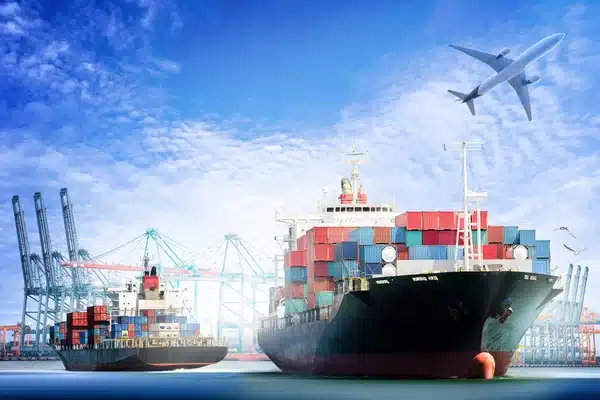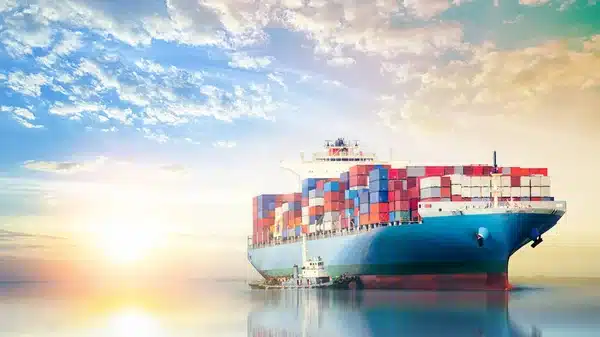The Middle East is a vital hub in global trade, bridging the continents of Asia, Europe, and Africa. Among its most prominent maritime centers are the ports in Dubai, Iran, and Qatar, each playing a pivotal role in international shipping. Ports such as Jebel Ali in Dubai, Bandar Abbas in Iran, and Hamad in Qatar are not just transit points but critical infrastructures supporting economic growth and connecting global trade routes.
This article delves into the capacities, operational efficiencies, and strategic advantages of these ports, offering insights for businesses and logistics providers.

Key Ports in Dubai
Jebel Ali Port
Location: Dubai, UAE
Importance: The largest port in the Middle East and one of the top 10 busiest container ports globally.
Features and Capabilities:
Annual Capacity: Over 19 million TEUs (Twenty-Foot Equivalent Units).
Facilities: Equipped with over 80 berths, advanced cranes, and efficient container handling systems.
Free Zone Benefits: Jebel Ali Free Zone (JAFZA) attracts international businesses with tax exemptions and logistics incentives.
Connectivity: Linked to over 140 ports worldwide, facilitating seamless transshipment and re-export activities.
Economic Contributions:
Jebel Ali Port is instrumental in supporting Dubai’s economy by handling a diverse range of cargo, from consumer goods to industrial machinery. Its efficiency and reliability make it a top choice for businesses exporting and importing in the GCC region.
Key Ports in Iran
Bandar Abbas Port
Location: Hormozgan Province, Iran
Importance: The largest port in Iran, strategically positioned along the Strait of Hormuz.
Features and Capabilities:
Annual Capacity: Approximately 7 million TEUs.
Infrastructure: Multiple terminals for containers, bulk cargo, and oil exports.
Multimodal Links: Integrated with Iran’s rail and road networks, enhancing accessibility for inland trade.
Specialized Handling: Capable of managing oil and gas exports, agricultural products, and industrial goods.
Role in Regional Trade:
Bandar Abbas serves as a gateway for landlocked Central Asian countries and is a key node in the International North-South Transport Corridor (INSTC). Despite geopolitical challenges, it remains a critical port for regional and global commerce.
Key Ports in Qatar
Hamad Port
Location: Doha, Qatar
Importance: A state-of-the-art facility that strengthens Qatar’s position in global trade.
Features and Capabilities:
Annual Capacity: Over 7.5 million TEUs.
Eco-Friendly Operations: Incorporates green initiatives and sustainable practices.
Advanced Technology: Automated systems for cargo handling and tracking.
Specialized Cargo: Efficient handling of general goods, livestock, and oversized shipments.
Economic Significance:
Hamad Port supports Qatar’s diversification efforts by reducing reliance on neighboring countries. Its direct connections to over 150 global ports enable Qatar to expand its trade horizons and enhance import/export efficiency.
Comparative Analysis of Key Ports
| Port | Annual Capacity (TEUs) | Specialization | Global Connectivity |
|---|---|---|---|
| Jebel Ali (Dubai) | 19 million | Transshipment, bulk cargo | 140+ ports |
| Bandar Abbas (Iran) | 7 million | Oil, gas, agricultural goods | INSTC, Central Asia |
| Hamad (Qatar) | 7.5 million | General cargo, automation | 150+ ports |
How These Ports Impact Global Trade
1. Enhancing Connectivity
These ports bridge critical trade routes, connecting producers and consumers across continents. Their strategic locations make them indispensable for businesses seeking efficient logistics solutions.
2. Driving Economic Growth
Each port contributes significantly to its nation’s economy by creating jobs, attracting investments, and facilitating trade. Jebel Ali supports Dubai’s re-export economy, Bandar Abbas connects Iran to Central Asia, and Hamad diversifies Qatar’s trade partnerships.
3. Innovations in Port Operations
The adoption of automation and sustainable practices in these ports showcases their commitment to modernizing logistics and reducing environmental impact.

Tips for Efficient Shipping Through Middle Eastern Ports
Work with Trusted Freight Forwarders: Companies like Tonlexing offer end-to-end logistics solutions, from customs clearance to last-mile delivery.
Understand Regional Regulations: Familiarity with local customs laws can prevent delays and fines.
Plan Ahead: Peak seasons and geopolitical factors can affect shipping times and costs. Early planning ensures smooth operations.
Leverage Multimodal Options: Utilize rail, road, and sea links to optimize transit times and costs.
The ports of Jebel Ali, Bandar Abbas, and Hamad are vital to the Middle East’s logistics landscape, offering unique advantages for businesses. Their strategic locations, robust infrastructure, and innovative operations make them key players in global trade.
By understanding the capabilities of these ports and leveraging their strengths, businesses can enhance supply chain efficiency and achieve cost-effective shipping solutions. For tailored logistics services and expert guidance, contact Tonlexing to navigate the complexities of Middle Eastern trade with confidence.


